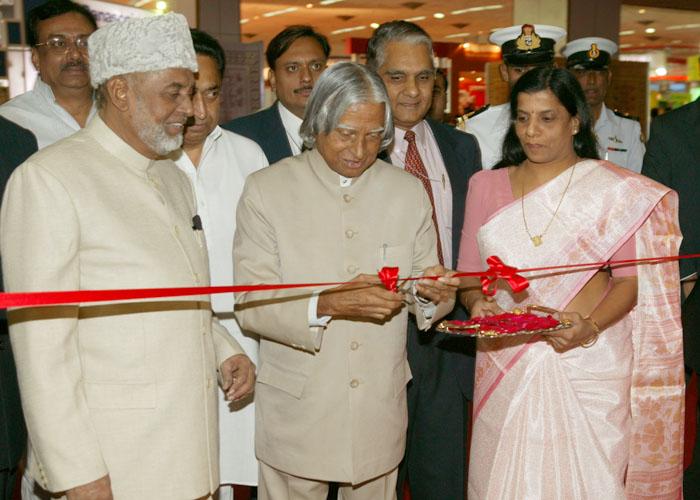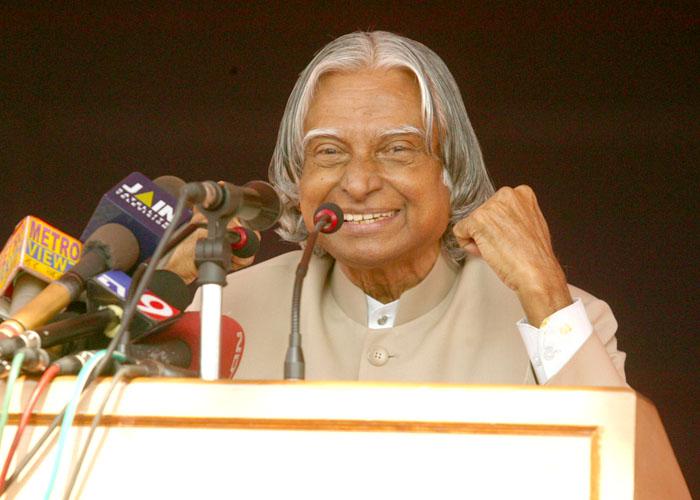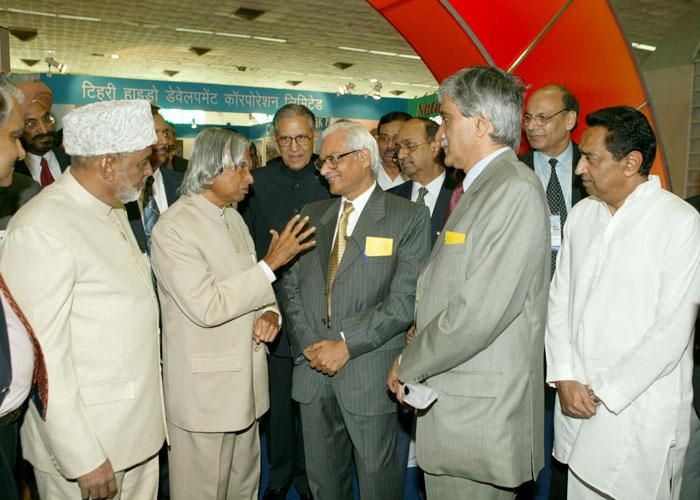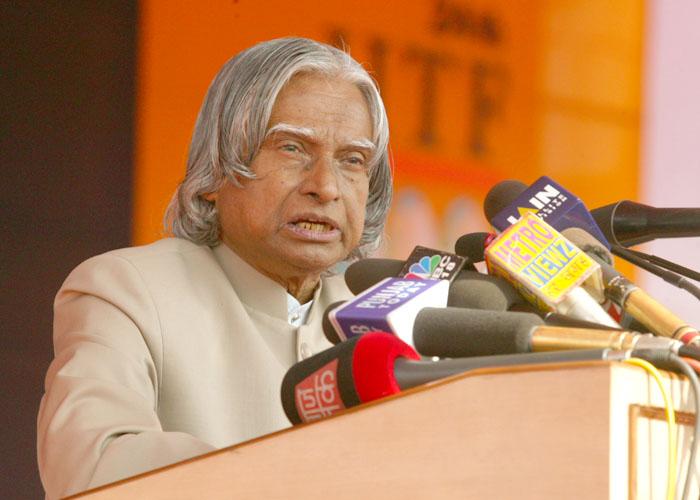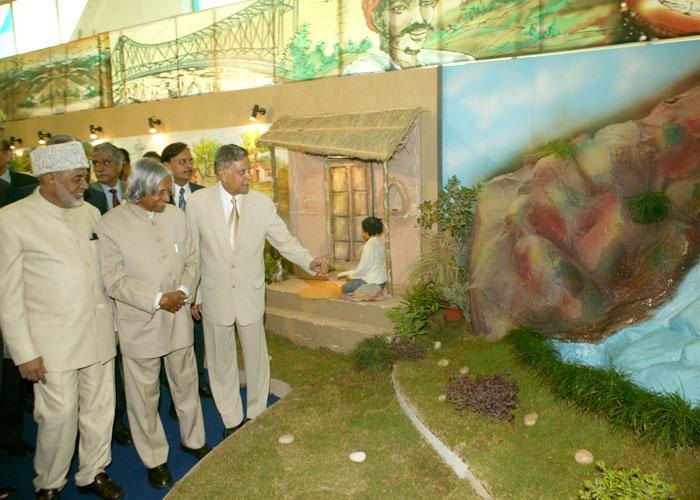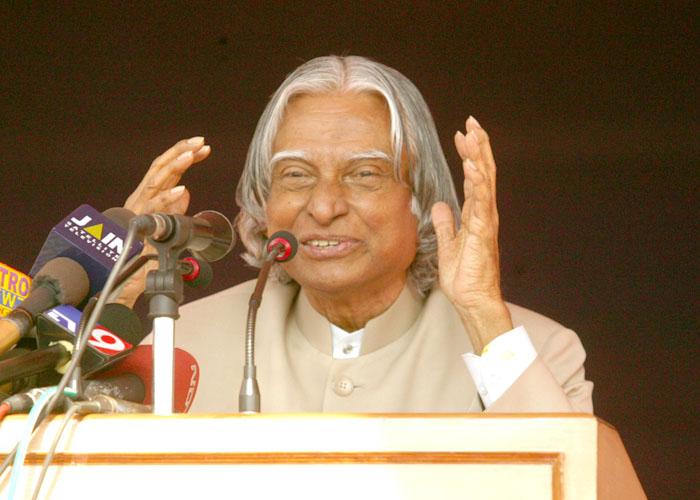Address At The Inauguration Of 24th India International Trade Fair - 2004
New Delhi : 14-11-2004
Creating Brand Institutions
I am delighted to participate in the inauguration of the 24th India International Trade Fair ? 2004. I greet the organizers, members of the Ministry of Commerce & Industry, members of the India Trade Promotion Organisation, Captains of industries, contributors and participants from various nations for this mega event. I also extend my greetings to partner country China and focus country Brazil, for this trade fair. IITF is a unique blend of trade and tradition, and provides a platform for a wide range of industrial opportunities in various sectors of the economy by showcasing nations? technological strength. This year?s Trade Fair has the twin theme of ?Agriculture? and ?Information Technology? ? which are the key drivers of the India?s socio-economic development. I have selected the topic for discussion: ?Creating Brand Institutions?.
During the last few years a number of developments have taken place in the agriculture and IT sectors with profound results in improving the productivity and quality of the products. I would like to share with you the status of development and focus for the future on the theme areas.
Agriculture and agro food processing
India is now producing 200 million tonnes of food grains, as a result of the first green revolution. India has now embarked on Second Green Revolution which will enable increase in productivity and diversification of the agricultural sector. The second green revolution will have the farmers in focus, farming technology as the friend, food processing and marketing as partners and the consumers as the angels to be satisfied. From now on to 2020, India will gradually increase the production to around 400 million tonnes of grains. The increase in the production will have to be done under the reduced availability of land from 170 million hectares to 100 million hectares with reduced water availability. We should also learn to diversify to meet specific consumer preferences, export markets and also in the interest of ecological balance. This is to be achieved through information access to all stakeholders and not with central controls or restriction of movements of agro products.
The challenges for the scientists and technologies would be in the areas of development of seeds that would ensure good yield even under constraints of water and land with ecologically balanced farming. The challenges for the scientist is indeed a knowledge graduation from characterization of soil to the matching of the seed with the composition of the fertilizer, water management and evolving new pre-harvesting techniques for such conditions. The domain of farming would enlarge from grain production to food processing and marketing. I visualize the trade fair showcasing the state of the art food processing industries for enabling the farmers and village enterprises to learn and produce products which are competitive in both national and international market. Another area where the trade fair can take a lead is to bring out the innovative technologies available in farm equipment relevant to Indian conditions. Newer forms of co-operative entities are required to be established for ensuring maximum benefit to the farmers. E-marketing concepts may also be put into practice to provide farmers choices in selling. Some of the areas which need focus are: soil upgradation, dry land agriculture, temperature and salinity resistant seeds and minimum water cultivation. There have been successful experiments carried out by TIFAC team in Bihar, where per hectare output of wheat has been tripled by farmers in collaboration with agricultural scientists through scientific methods. As a result, the earnings of the participating farmers have remarkably improved. Such experiments can be replicated in many parts of our country, carefully tailored to local conditions. This is a crucial socio-economic need.
ICT and Agriculture
ICT is a potent tool in various sectors of activities in public domain, and agriculture is no exception. Demand and supply monitoring of inputs, dissemination of technologies relevant to farming community through various organizations including universities, making available marketing information at grass root level are some of the usage of ICT in agriculture. Covering each and every farm family through village Panchayat knowledge centres, Internet and community radio should be the aim for greater usage of ICT. Successful models of effective communication to the farm community through the use of ICT accomplished in different states can be presented in the exhibition for emulation by farmers of different states.
ICT - India's Core Competence
The core competence of IT, Indian industry has earned revenue of 15.9 billion in the year 2004-05 and targeted 20.5 billion in the next year. With the non-linear growth and value addition with innovations in the application areas such as information security, e-Governance, embedded real time software, hardware and software integration, chip design, wireless, infotainment and tele-education, IT and communication industries in India should aim at higher growth rate to reach a target of 150 billion dollars business by the year 2010.
Enterprises for rural prosperity
India has 700 million people living in 600 thousand villages. Therefore rural sector is a big market. We need enterprises to service this need and generate a large scale employment. Entrepreneurs and captains of industries assembled here have a great business opportunity. I would like to discuss some of the large-scale employment and wealth generating avenues in the rural sector.
(a) Jatropha - Biofuel: Government has decided to permit of mixing of 10% bio-fuel with diesel. This has opened up new opportunities for employment and wealth generation. We have nearly 63 million hectares of wasteland available in the country, out of which 33 million hectares of wasteland have been allotted for tree plantation. Certain multi-purpose trees such as Jatropha can grow well in wasteland with very little input. Once grown the crop has a fifty years of life. Fruiting can take place in this plant in less than two years. It yields oil seeds up to five tonnes per hectares per year and produces two tonnes of bio-diesel. Presently, the cost of bio-diesel through the plant is approximately Rs. 17 to Rs. 19 per litre which can be substantially reduced through choice of right size of the plant and using high yield variety plantation. Bio-diesel plants grown in 11 million hectares of land can yield a revenue of approximately Rs. 20,000 crore a year and provide employment to over 12 million people both for plantation and running of the extraction plants. This is a sustainable development process leading to large scale employment of rural manpower. Also, it will reduce the foreign exchange outflow paid for importing crude oil, the cost of which is continuously rising in the international market. Moreover, use of Bio-diesel is Carbon mono-oxide emission free. This oil can also be used for soap and candle industries. De-oiled cake is a raw material for composting. Also Jatropha plantation provides a good environment for honey production. We should absorb best of the technologies available worldwide and start commercial operation soon, instead of staying at pilot plant levels. I would request the industrial community assembled here to take the initiative, generate detailed project report in collaboration with technical agencies such as The Energy and Research Institute (TERI) on this project and promote entrepreneurs with financial support from the banks in rural areas who can undertake the plantation and commissioning of extraction plant leading to production of cost-effective bio-fuel. Can there be a better project than this for coherent development of our rural sector and sustainable business preposition for industry?
(b) Rural Lighting: Recently, I received a E-mail from Chintapalli Gramam, Nalgonda District of Andhra Pradesh about the implementation of LED lighting through solar power in a remote village inhabited by Lambada tribes. The village has a population 142 people residing in thirty houses. The one time cost of providing LED lighting for all the houses including wiring and solar charging system for the battery is around Rs. 65,000. On an average, the cost of providing electricity per house works out to Rs. 2200. This is definitely much cheaper than the cost of providing electricity to the village through a power line running into number of kilometers costing many lakhs of rupees. Particularly in remote areas and hilly region electricity could not be reached due to high initial cost of installation. Presently I am told electric lines have not reached over one lakh villages in our country. LED power system is a self -contained system in which the energy cost is virtually free since solar energy is used to charge the batteries. I would recommend the industrial community to study this project for converting it as a business proposition, which can be taken by rural enterprises for implementation in different sectors. Once successful this technology can find utility in many parts of the world where similar situation exists. This has tremendous business potential.
(c) Electricity Generation through Municipal Waste: Increased urbanization has led to a serious problem of accumulation of municipal solid waste. Efficient and environmentally clean disposal of garbage has always been a major technological challenge. While being a threat to the environment, mounting garbage is also a rich source of energy. The potential for converting this waste into useable energy, which will eliminate a major source of urban pollution, was realized by one of our innovative organizations- Technology Information Forecasting and Assessment Council of DST which helped in developing a completely indigenous solution for the processing of waste into a source of fuel. This fuel could, in turn, be used for generation of electricity through mini plants. Two entrepreneurs in Andhra Pradesh adopted the technology with refinement and established two independent plants in Hyderabad and Vijayawada generating over 12 megawatts of electricity which is being supplied to the State Grid. India needs thousands of mini power plants using municipal waste. Industrial sector can provide the thrust for promoting creation of such power plants in major municipalities as first step in collaboration with banks and non-governmental organizations. These are some of the examples of rural development projects which can be promoted by the industry with the active participation of banks for upliftment of the 700 million people living in our villages. There are similar possibilities in water, habitat, infrastructure, ICT, Agriculture and many more. Once the industries get committed in all these sectors in a proactive manner, I am sure the path to development will be much smoother and our realization of development will be much faster.
Conclusion
Business symbolizes Competitiveness. Competitiveness leads to economic growth. Competitiveness is single factor which will decide India transforming into a developed nation. Technology powers the competitiveness. Competitiveness leads to creation of brand institution. IITF can be the unique window of knowledge for smart and intelligent minds to understand the strength of competitiveness. If we choose an integrated technology-driven path, then India will be in a position to become a developed nation by 2020. Some people tend to think of economy without the technology dimension. Therefore, their extrapolation will be linear. If we use the right technologies, we can bring in the right non-linear elements in all our sectors viz. agriculture and agro processing, education and healthcare, infrastructure including water and power, information and communication technology and critical technologies in strategic sectors. Another factor which is very important for growth is that we should have synchronized and integrated growth in all sectors of the economy which is vital for making the impact of growth reaches every section of the society.
I would like to request that Indian Industries should learn to think big with the whole world as our market by developing a strong and interactive Technology- Market - Value Adding Competitive Linkage. It will be a great resurgence for our manufacturing, marketing, and maintenance services. Indian Industries should aim to become multi-nationals. Our youth love challenging jobs. We have to create challenging opportunities for them. We can WIN if we think we can win and act tenaciously with our clear goals in India to EXCEL IN A COMPETITIVE NEW WORLD AND CREATE INDIA BRAND.
I would like to compliment the India Trade Promotion Organisation, the organizers of IITF - 2004 for playing the role of catalysts and facilitators in increasing exports and giving impetus to intra-country trade. I declare the 24th India International Trade Fair ? 2004 open.
My best wishes to both national and international participants for success in their business endeavours.
May God bless you.

